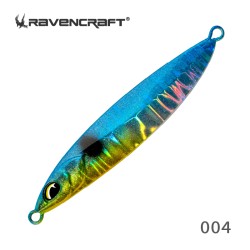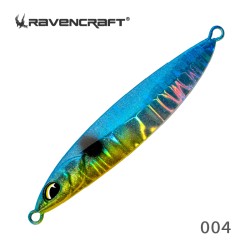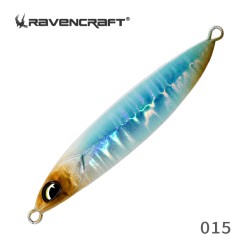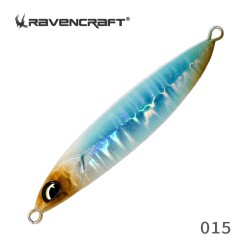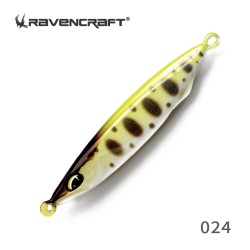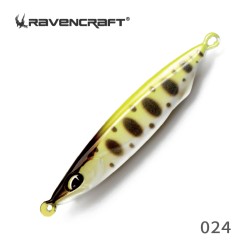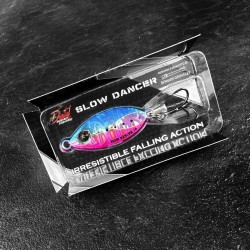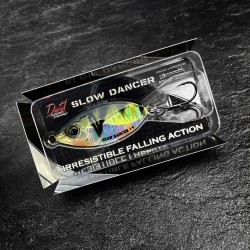Metal Lures

Metal lures: how to fish with them?
Metal lures are lures made of metal (lead, tungsten, and alloys), some of which emit strong vibrations like spinnerbaits and chatterbaits. The spinnerbait is constructed with a wireframe carrying a type of spinning blade (willow leaf blade or rounded colorado). To select larger pike, you can choose from a variety of soft lures to add to the spinnerbait to provide a bigger bite.
The chatterbait lure has jig heads of different designs (lead or tungsten). It is equipped with a trapezoidal paddle that emits strong vibrations. These two models, with blades, are equipped with a single hook and are perfect for freshwater predator fishing in dense cover areas such as dead wood, structure, and plant cover. In this category we find the vibrating blades very effective for catching zander, pike, and black bass.
A vibrating blade, unlike a lipless vibration, has a center of gravity located between the head and the belly, it is a super-effective model when no other model works, on inactive fish.
Another versatile metal lure for freshwater and saltwater fishing is the jig casting also called casting jigs or jigging spoons.
In small size, it is perfect for zander fishing. The 8 / 10 gr models are perfect for fishing from the shore in linear retrieve or on the bottom.
The models above and up to 20 gr are excellent for vertical fishing in deep areas such as lakes.
These small jigs are versatile and can be used all year round. They are exceptional in mini size during the summer when the yearly fry is everywhere.
The density of these small lures makes it possible to fish with jigs even in strong winds and allows to cover the strongest currents in rivers but also to reach the best casting performances.
Another category of jigs is a bit different from the small size jig casting, we are talking about the heavier models from 20 to 250 gr, it is the category of jigging lures for sea fishing.
They are used all year round from the shore (shore jigging) or from a boat (vertical jigging), for fishing for marine predators (sea bass, amberjack, lichen, bonito, ...).
For jigging, this type of lure is equipped with single hooks called assist hooks. They are located on the head line tie of the lure.
The flat and asymmetrical shapes fall in the slow jigging category, characterized by an effective flicker during the falling action of the lure. Finally, to fish in slow jigging, from a boat at sea, we use a specific fishing rod action called parabolic.
Spinnerbait : an all-terrain lure
To begin with, the spinnerbait originated in the United States and was designed for fishing black bass with lures. This lure has a triangular frame that allows it to slip between obstacles such as drowned wood and tangles of branches, where pike are posted. There are different types of blades, like the colorado blade and the willow leaf blade.
The willow leaf blade is long and elongated; it is a blade that doesn’t pull much on the rod and offers a maximum of light flash. A colorado blade has a rounded shape, it produces large low-frequency vibrations and pulls heavily through the rod. This type of blade is ideal for turbid waters to wake up inactive fish.
The spinnerbait is equipped with a single hook, placed in its center, to remain protected during the passage in the obstacles where the big fish are. To select large fish, a trailer lure is added to the single hook.
This soft lure slows down the descent which allows us to fish in the shallow area. A lure retrieve with the spinnerbait is called the free-falling. This one consists in taking advantage of the descent of the lure to let the blade spin and call in big fish.
It is possible sometimes to experience short strikes when fish hit but miss the mark and you fail to catch them. It can be because of low visibility in the water. In this case, you can add a trailer hook. It is fixed with a rubber that is attached to the base hook of the spinnerbait.
In conclusion, this is the most versatile of the hard lures for fishing areas rich in black bass, pike, perch but also zander.
Chatterbait : vibration and cranking
First of all, the chatterbait is a lure that also comes from the USA, like the spinnerbait, designed for fishing black bass in obstacles. This lure is equipped with a trapezoidal paddle that gives it a rolling action during the retrieve. The rolling consists of a regular pendular movement of the lure on itself as well as a slow movement from right to left.
The paddle placed at the front of the lure plays the role of a bill on a hard lure. The body of the chatterbait is equipped with a silicone skirt, which vibrates when the lure moves.
This is one of the best lures for pike and black bass in a linear pattern but also in stop and go. The pause triggers a downward phase, excellent, with a semi-slack line waiting for subtle bites. Like the spinnerbait you can add a trailer to increase the bite or slow down the descent of the lure.
The chatterbait is used in linear retrieve by making contact with the bottom at each pause. This regular retrieve is done on the reel without any additional movement on the rod, the action is done only on the reel, we call it cranking. Not only for pike, but the chatterbait is also excellent on zander, it produces a large vibration for fishing in the river. To conclude it is a complementary lure to the crankbait which allows to fish close to the bottom.
Jig casting: jig casting lure, jigging spoon
First of all, this lure is very simple in its design. There are slender, straight, asymmetrical, and flat shapes. The specific shape of the cast affects its swimming action. The more flats and curves you find, the more the lure flips to offer an attractive falling action.
By counting the number of seconds, you can estimate the depth of water you’re in, allowing you to fish the right depth where the active fish are. The casting jig is a great lure to drag on the bottom in snag-free spots, making it an excellent choice for fast fishing.
This lure is effective for big perch and pike throughout the season, allowing you to reach remote locations off the shore. The jig casting allows the fisherman to stand out from other lures with a more classic swimming action, the like of which the game fish are used to. It can be used for vertical, linear, stop and go by stopping the descent at the desired depth. In short, it is the lure to always have on, often the only one to garner attention when nothing else works!
Jig: shore jigging and boat jigging
The advent of jig casting comes from the first metal lures, which appeared in the '80s for sea fishing. Different shapes allow different types of fishing action. Indeed, whether you are fishing from the shore or from a boat, depending on the weather conditions, you will look for a different type of swimming action.
In calm weather, the fish are moody and often inactive. For this reason, we use a finesse approach called light jigging. We select jigs rather light, slim shape with a narrow geometry and rather long.
On windy days, we play on the density of the jig to achieve good casting distances if we fish from the shore jigging. For boat fishing in the presence of a strong current, a straight and thick type is also chosen to reach the bottom quickly without being hindered by the boat's drift.
Finally, rounded shapes are interesting for slow jigging. With this technique, you stay longer in the strike zone of the fish before they strike. It is a technique often decisive to make fish bite in these hard conditions. In slow jigging we use flat jigs with rounded shapes, which can be symmetrical or not.
The action of these lures offers a slow, fluttering descent through the entire water column. In conclusion, this lure excels anywhere and in any weather. It is a versatile lure to have with you at all times when fishing with lures in the sea.



